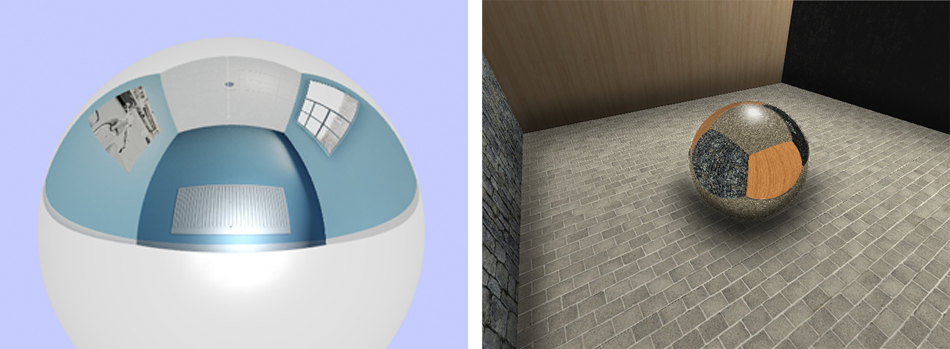Results for the projection model and rendering track:
When we started the project, our main
goal was to have the QI method working with the maximum precision. To verify that, we projected a double colored grid on a spherical
mirror, making sure that each 3D point had the respective reflection point correctly represented. This step was performed using Matlab.

Some months later, the main concern was the method performance. So we converted the whole code from Matlab to
C++ and generated some simple images, like the three following ones. We projected four walls (made of points) on a sphere and, besides
concluding that the QI method was faster than the Snell's Law and the Fermat Principle (see the graphics below), we also verified that
it correctly projected 3D points on every direction.


Some points still had a wrong projection. So we developed a simple application where we could choose, using a
GUI, the main parameters of the projection to help us understand those strange behaviors. We also did some progresses in the image
creation!

After a break on the project, we restarted with the image creation in mind, again! This time we introduced
OpenGL to generate images, like the following one. We also studied some similar methods, new ways to proceed with our method, etc.

We continued working on the image creation issue. At the left, we used openGL more
efficiently. At the right, we used Irrlicht SDK, now projecting textures instead of the previous point-to-point way.

These are our last results! The image is a rendered reflection of the room in a spherical mirror. Left, the scene rendered using environment mapping,
running at 120 fps. Middle, our approach is used to reflect the scene, rendering at 1 fps. Right, ray-traced image (0.5 fps).

This is a detail of the reflection rendered on the mirror. Although environment mapping (left) is the fastest on
reflection, it is the most inaccurate one. Our method (middle) produces more realistic images, comparing to ray-tracing (right), in
half-time.

By these days, we are developing the whole method to the GPU and expect it to be extremely faster to render accurate (double
precision!) images of reflections.








